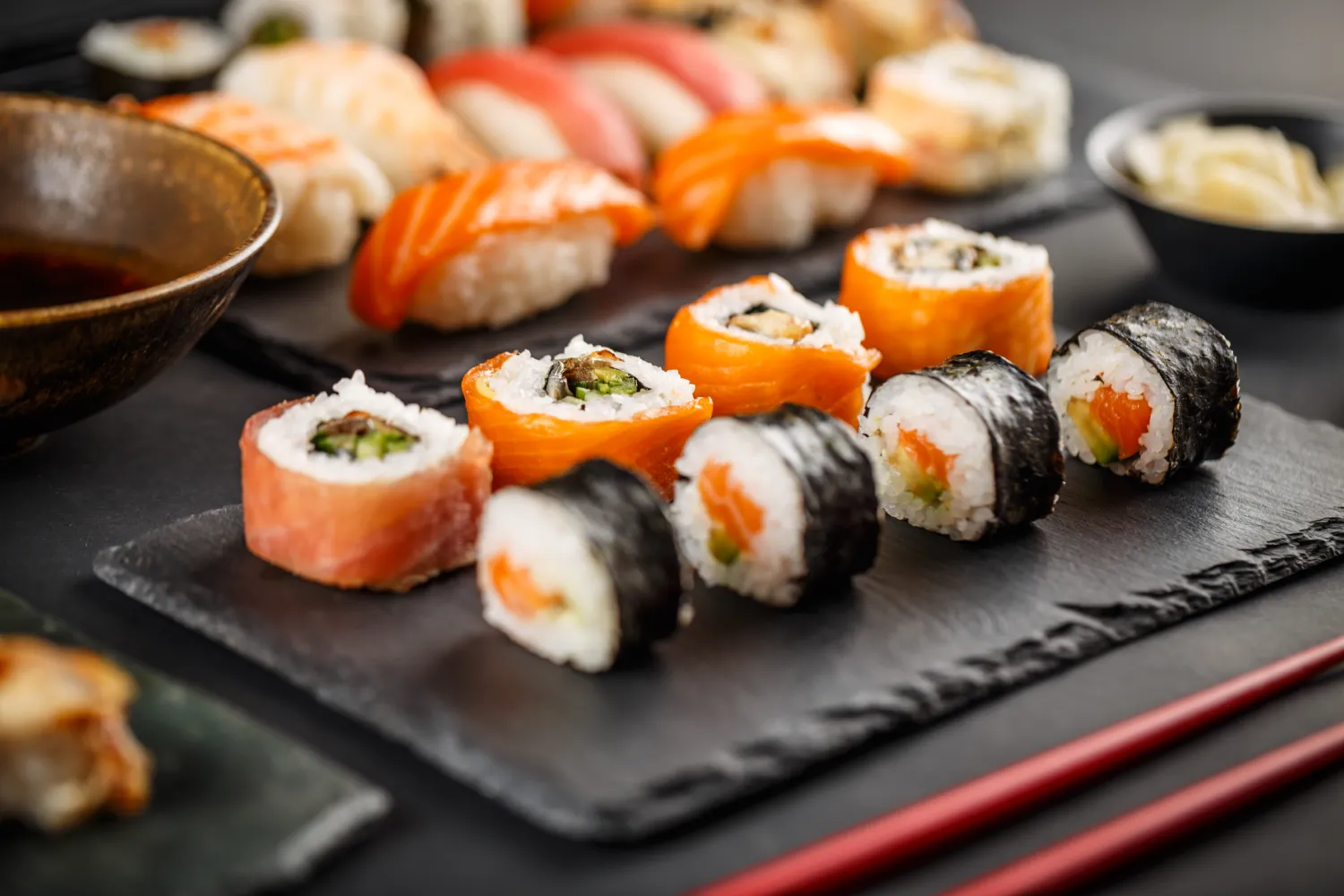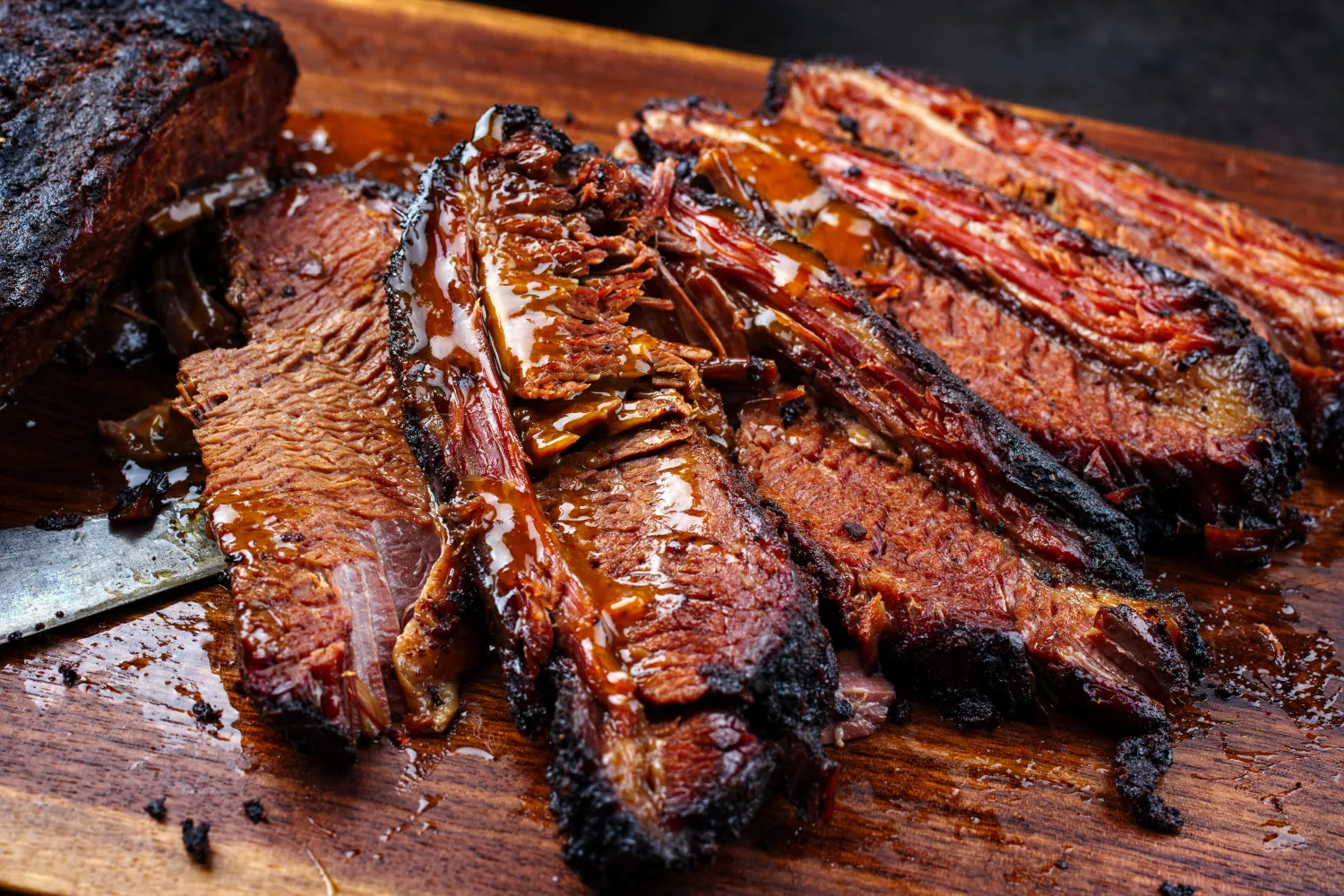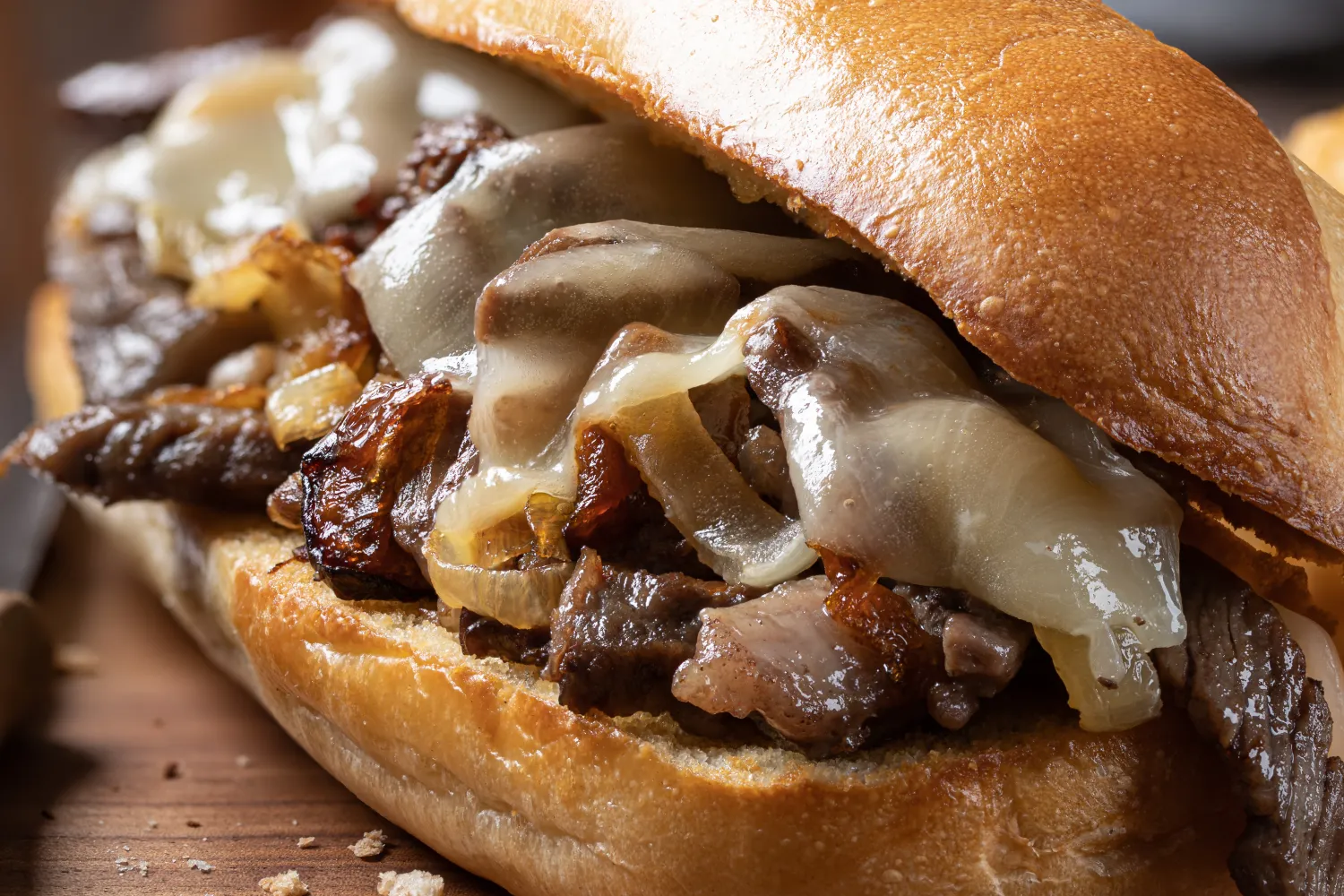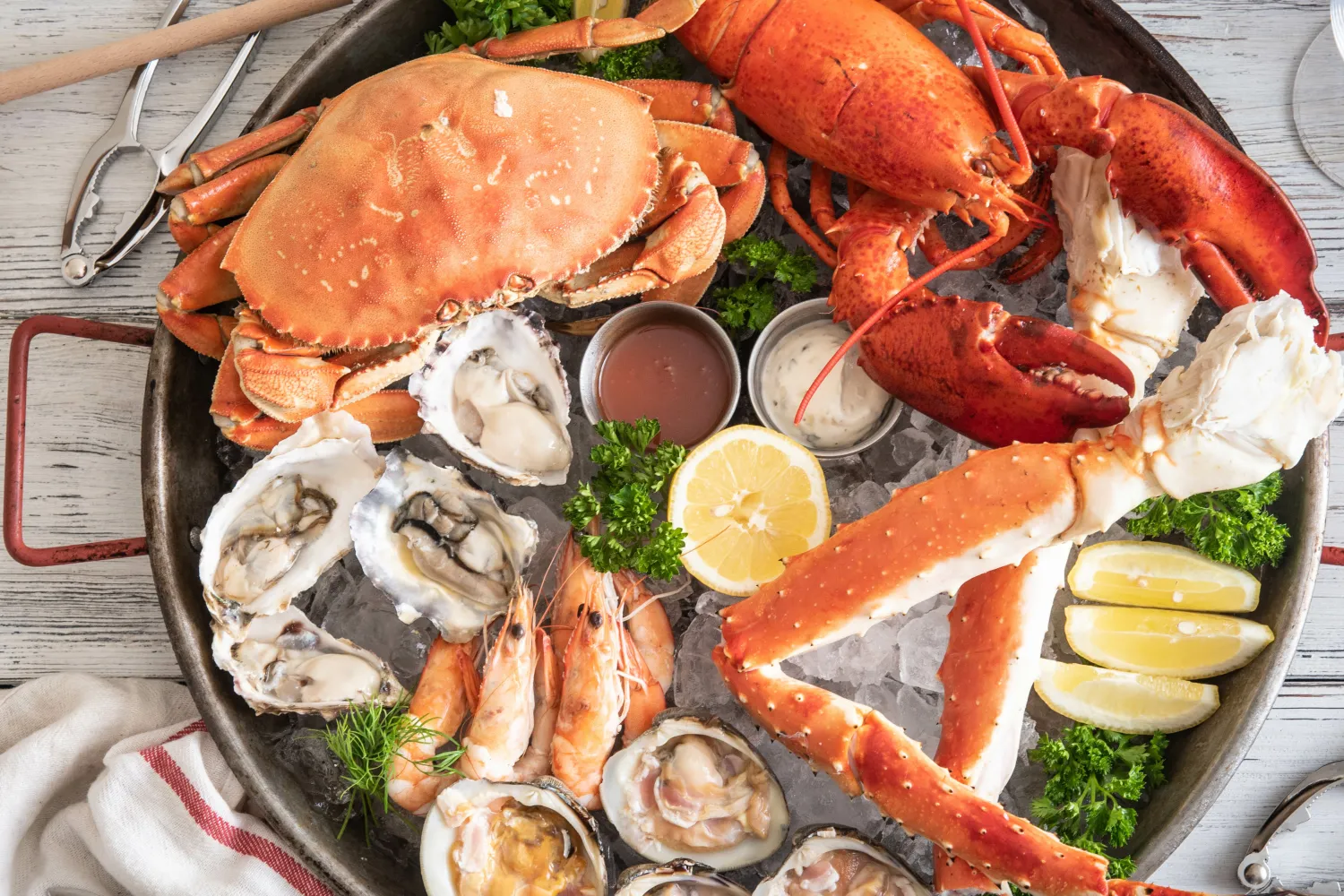The Role of Tsukiji Fish Market in Japanese Cuisine
As the city yawns awake, a special corner is already bustling with fervor. It's the Tsukiji Fish Market — the heart, soul, and belly of Japanese cuisine. This iconic landmark has been the culinary epicenter of Japan for almost a century, sculpting its gastronomic identity one fish at a time.
Hold onto your sushi mats, darling! We're about to dive into the dizzying world of the Tsukiji Fish Market, the lifeblood of Japanese cuisine. The market's influence runs as deep as the Pacific Ocean, from humble households to opulent restaurants.
The Fish Market Scene
Step into the Tsukiji Fish Market, and you're swept up by a wave of sensory delight. You'd think this is the city's most happening party, but really, it's just another day in this seafood haven.
The first thing you'd notice? Rows and rows of stalls teeming with the freshest catch. Tuna, octopus, eel — name it, and you'll find it.
You'll see everything from seaweed to vibrant vegetables on the sidelines, making this market a chef's playground. But, darling, it's more than just a marketplace. It's a symphony of sights, sounds, and, yes, delectable smells.
What brings this place to life is the people. You see vendors in their element, their banter as fresh as their merchandise. Their sharp knives are like wands, transforming seafood into culinary masterpieces.
Buyers, too, are active participants in this dance. Their haggling is an art, a nod to age-old traditions that are still very much alive.
Tsukiji: A Market With History in Its Halls
Fancy a splash of history, darling? Let's ride the wave back to the lively 1920s.
That's when Tsukiji Fish Market, our dazzling seafood queen, made her big splash in the heart of Edo — the old name for Tokyo, Japan. Yet, the saga begins even earlier, in 1657. After a catastrophic fire consumed much of Edo, the shogunate created Tsukiji, or “reclaimed land,” using the fire's rubble.
Zoom ahead to the 20th century. Post the Great Kanto Earthquake in 1923, Nihonbashi's fish market was moved to the Tsukiji district. This move made Tsukiji Tokyo's main seafood hub, home to first-rate fish and thrilling tuna auctions, operating from early morning to the early afternoon.
Tsukiji stood as the largest wholesale fish and seafood market globally for nearly a hundred years. Oh, the spectacle it was! As dawn broke, the market buzzed to life with vendors and the freshest seafood from around the world.
However, in 2018, Tsukiji's wholesale operations, including the popular Tsukiji Inner Market, were relocated to the Toyosu Fish Market. But the Tsukiji Outer Market, with its array of sushi restaurants, street food stalls, and retail shops, remained. This slice of Tsukiji continues to be a gastronomic Eden for food tour enthusiasts and the central attraction of Tokyo's food scene.
Influence on Japanese Cuisine
So, how does the Tsukiji Fish Market shape Japanese cuisine, you ask? Well, honey, it's like asking how the sun influences the day. This market is a powerhouse of the freshest and most diverse ingredients, serving as the backbone of Japanese culinary genius.
First off, let's talk about seafood. The Tsukiji Fish Market supplies a cornucopia of marine delights to restaurants and homes. It's the holy grail of freshness — as if Poseidon himself handpicked the catch.
This seafood extravaganza influences a range of dishes, giving them a flavor as vibrant as Tokyo. Think about your favorite sushi or sashimi, and chances are, it owes its zing to this market.
But it doesn't stop at seafood. The Tsukiji Fish Market also plays host to an array of other culinary treasures, impacting an even wider spectrum of Japanese cuisine. With fresh and vibrant ingredients, chefs can unleash their creativity, crafting traditional and innovative dishes.
In short, the Tsukiji Fish Market is the culinary compass that guides Japanese cuisine. It's the touch of authenticity, the dash of freshness, and the sprinkling of diversity that makes every dish a delight…And it’s most likely the place where the best restaurants in the region go for their daily catch.
The Tuna Auction: A Deep Dive
When we talk about Tsukiji, darling, we cannot ignore the grand spectacle that steals the show — the tuna auction. It's where the best of the best tuna are put under the spotlight, and the highest bidder gets the prize.
The most expensive tuna sales on record generally take place in Tsukiji. This isn’t canned tuna, darlings. This is the bougiest fish in the sea.
The tuna in this auction isn't just any tuna. They're superstars of the sea, the belles of the ball.
Each has a tale to tell of their journey from the deep blue sea to the auction block. And it's this journey that holds the secret to the irresistible umami we associate with Japanese seafood.
Why all the fuss about tuna, you ask? Well, imagine Japanese cuisine without the depth and richness of fresh tuna.
Like an outfit without the perfect accessory, it just wouldn't have the same flair, would it? Tuna, sourced from Tsukiji's auction, lends a signature touch to many Japanese delights.
The influence of the auction, however, goes beyond borders. It sets the pulse for the global sushi industry, determining the price and prestige of the coveted bluefin. Every bid is a testament to Tsukiji's enduring legacy — an echo that resonates in every sushi-serving corner of the world.
Sustainability Practices
Now, hold up! With all this talk about the bustling Tsukiji Fish Market, it's easy to get carried away and forget about the big picture. Honey, let's face it — our oceans aren't an endless buffet. Overfishing is a real concern, and we've got to give it the attention it deserves.
The Tsukiji Fish Market understands this, and it's not sitting idle. It's like the eco-friendly diva of the seafood world. Sustainability is no longer a buzzword but a mantra that echoes through the marketplace. The market is stepping up, showcasing that successful business and environmental responsibility can swim together.
For starters, the market is embracing sustainable sourcing. They're working closely with fishermen and farms that adhere to responsible practices. It's all about taking from the ocean while making sure there's plenty left for future generations.
With tons of seafood passing through daily, waste could pile up higher than a skyscraper. But Tsukiji is tackling this head-on, reducing waste and ensuring efficient recycling.
And in general, markets like Tsukiji help to promote sustainable practices and more mindfulness around where our food comes from…and the fact that it isn’t an infinite resource. By shopping directly in food markets where you’re interacting with the people who bring that food to your table in the first instance, individuals are more likely to develop a care for our ocean. And this is important because we don’t want to run out of delicious seafood to eat!
Tsukiji Fish Market: The Heartbeat of Tokyo's Gastronomy Scene
Tokyo isn't just Japan's capital city, darling — it's the world's gastronomic capital! And the Tsukiji Fish Market, located in central Tokyo, right by the Tsukiji Shijo Station on the Hibiya Line, is its pulsating heart. The market's dynamism extends beyond its bustling grounds, rippling out, transforming Tokyo into a foodie's paradise and a must-visit for any Japanese travel guide.
Tsukiji Fish Market's fresh seafood and more, sourced from the bounty of the sea and the cornucopia of the land, feeds Tokyo's diverse food scene. This is most evident when you roam the streets of Chuo, near the Ginza district, with its street food stalls and sushi restaurants. They all share a common thread — the essence of Tsukiji.
Tsukiji doesn't stop with the market. It extends its influence to charming Izakayas in the heart of Tokyo, from Shibuya to Shinjuku. Known for their hearty fare, these laid-back pubs owe their charm to Tsukiji Fish Market. They get their fresh, flavorful ingredients, including delicate scallops and the freshest sea urchin, straight from the market's early morning wholesale operations.
Tokyo is peppered with sushi restaurants that embody culinary sophistication. Their menus are a testament to Tsukiji's vibrancy, boasting an array of ingredients that only the wholesale market can offer.
In short, the Tsukiji Fish Market, not to be confused with the newer Toyosu Fish Market, is more than a marketplace. It's a culinary catalyst that feeds into the gastronomic landscape of Tokyo, keeping it vibrant, diverse, and utterly delicious. Remember to check it out first thing in the early afternoon for the best experience!
A So-Fish-Ticated Finale
From its aisles teeming with fresh produce to the adrenaline-filled tuna auctions, every corner of Tsukiji tells a tale. A tale of how it has shaped — and continues to shape — the culinary landscape of Japan and beyond.
Tsukiji isn't just a place. It's an experience. It's the scent of the sea, the bustle of the crowd, the sound of sharp knives slicing through fresh fish. It's the taste of authenticity, the freshness in every bite, the diversity on every plate. It's the spirit of Tokyo and the soul of Japanese cuisine.
Sources:
Exploring the Fish Market Through Three Stages of History | Google Arts & Culture
Japanese Food and Cooking | University of Pittsburgh
Tuna Sells for Record $3 Million in Auction at Tokyo’s New Fish Market | Reuters
secrets, elite access & special discounts!










































































































